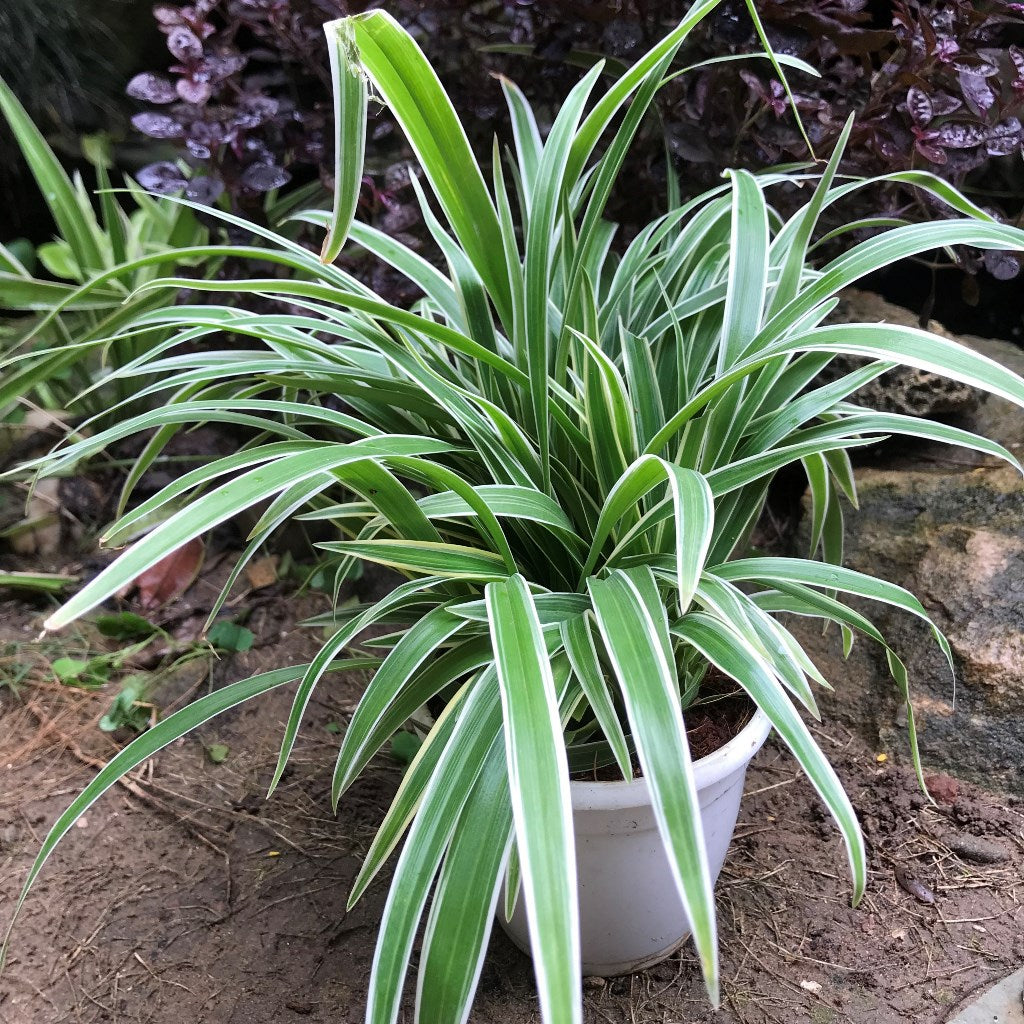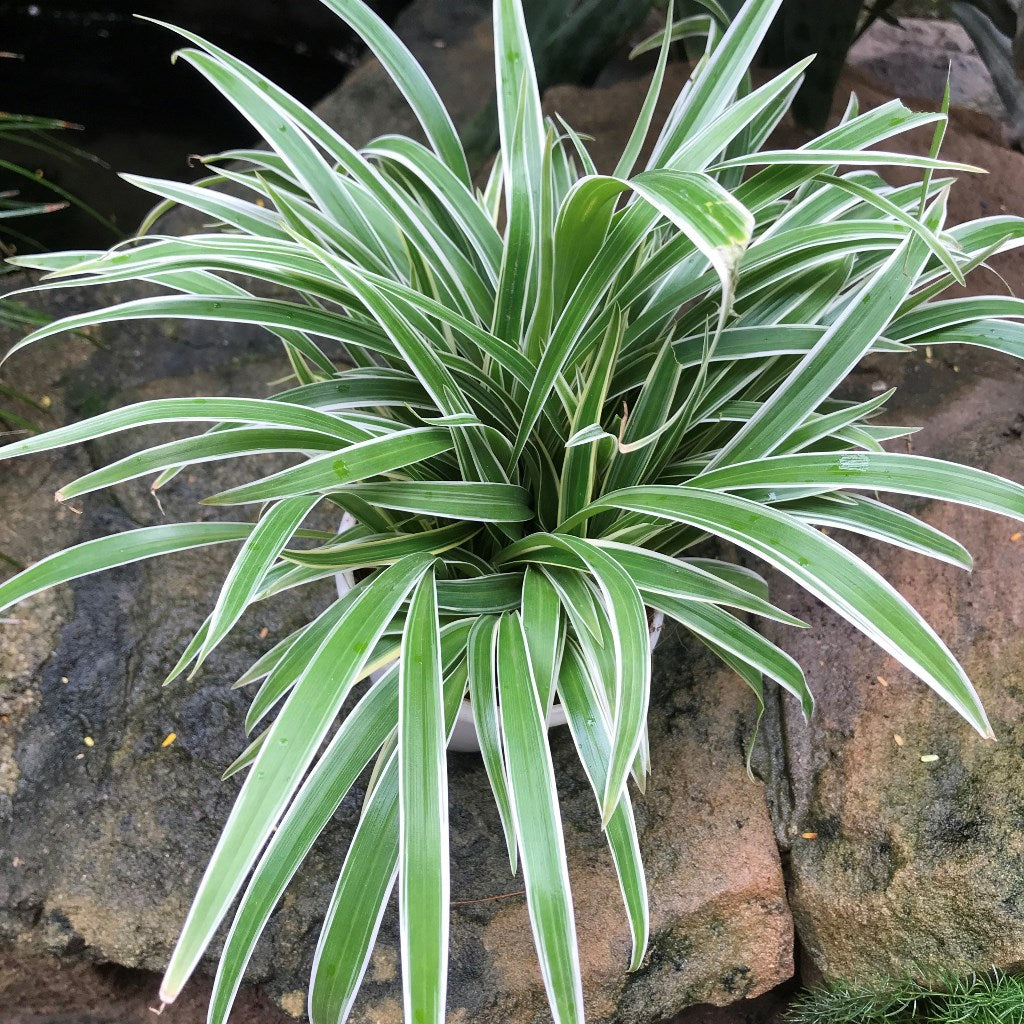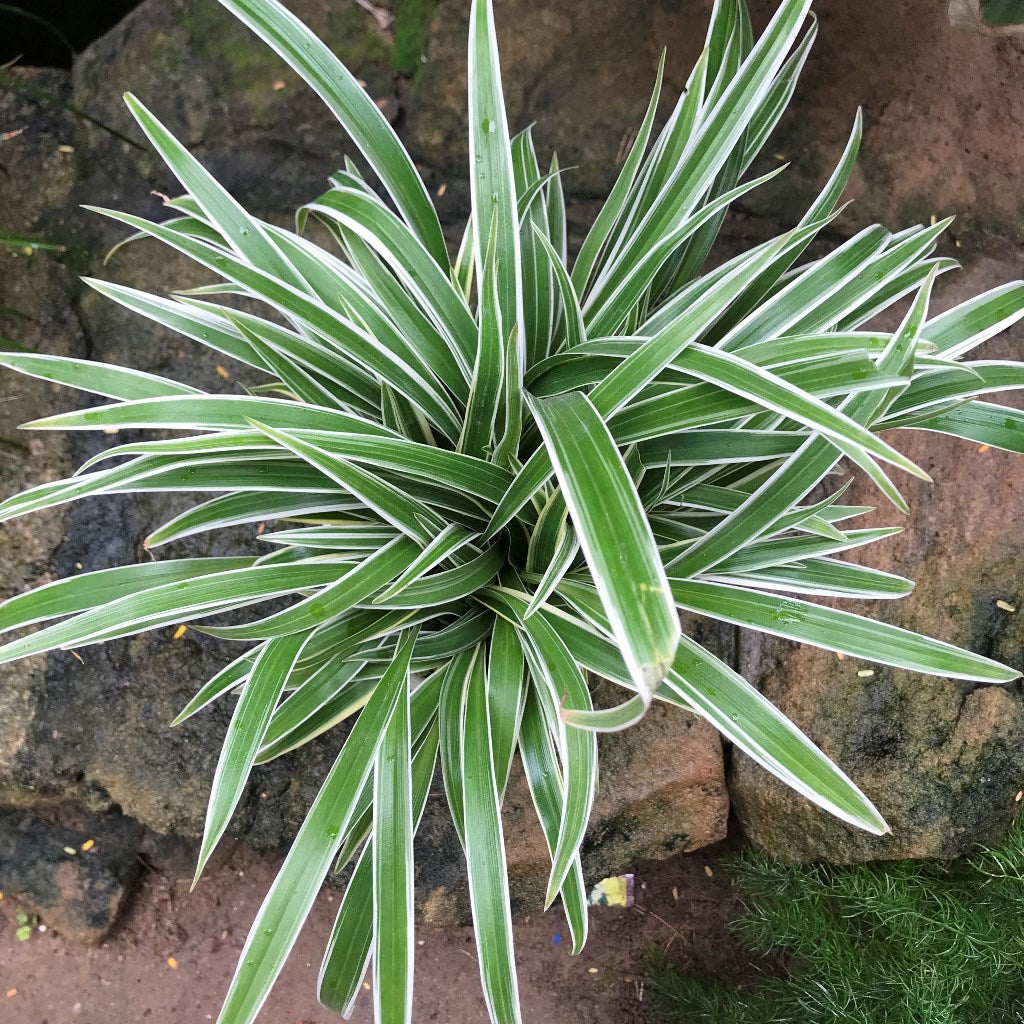Bichetii Grass
Family
Anthericaceae
Origin
Eastern Asia
Description
Chlorophytum laxum or Saint Bernard's Lily is a house plant with long slender archig leaves with white banding down the center or on the margins of the leaves. The roots are fleshy and it has tiny 6-petaled white flowers that rarely appear.It is often confused with Spider Plant (C. comomosum).
The slender, arching leaves are dark green with a creamy white stripe. Leaves grow from a central crown and can reach up to 1 ft (30 cm) long. Give this plant plenty of light for the best leaf color. Plants grown in low light may lose their variegation..
Environment
Chlorophytum needs a normal, moist, sandy loam soil and should be best in indirect sunlight. They like plenty of water, between spring and summer. In the winter they should need a lot less. Avoid too much hot air as this will affect the leaves. Spraying a water mist in the summer will help.
Landscape Use
Spider plants look best in hanging baskets or on tall stands or pedestals to show off their trailing foliage.























